The Windows 10 Store is an awful experience for core gamers, and it needs to change
The Windows Store hasn't exactly set the world on fire, and it's not hard to see why.
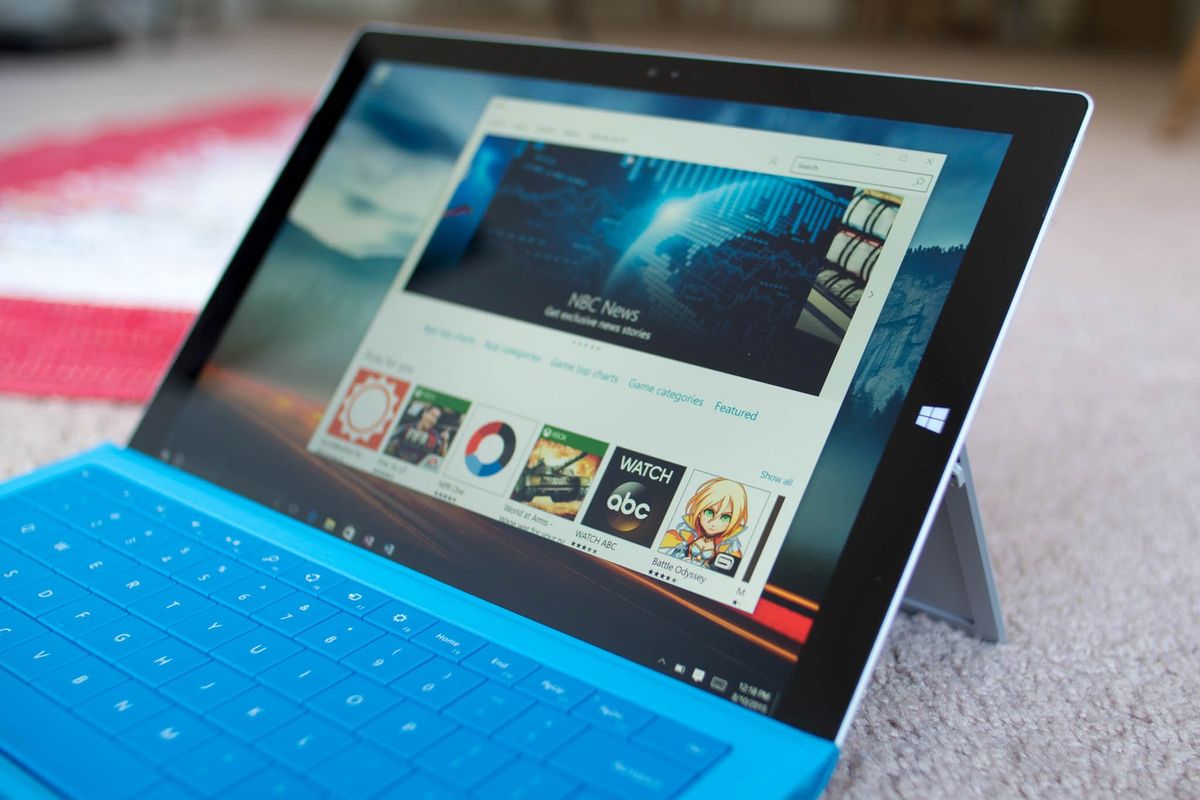
While some progress has definitely been made with Microsoft's app store offerings, the current format is clunky at best, counter-intuitive at worst. Our Executive Editor Daniel Rubino recently discussed the notion on the latest episode of Ask Dan Windows, and it's a question I often see thrown around on reddit, Twitter, and other networks.
Step into any PC gamer's community, and you will see near-universal revulsion for the Windows 10 Store as a solution for delivering video games. I'd argue that a large part of that mentality is due to latent anti-Microsoft sentiment, but the way the Windows 10 Store is set up doesn't do Microsoft any favors.
Things have improved, but two years after Windows 10's launch, the Store is simply unpleasant to use not only if you're a core gamer, but even if you're a mobile gamer, serving nobody in the process.
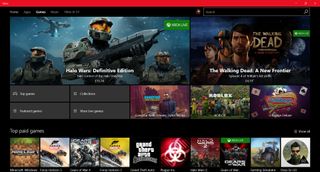
Core PC games need their own storefront
Perhaps the most obvious thing I think Microsoft should do is either give core Xbox-enabled PC games their very own exclusive storefront or bake them into the existing Windows 10 Xbox app. The reasons for this are numerous, but the potential solutions are sadly, a little murky.
The Universal Windows Platform (UWP) isn't Universal
You can't tell at a glance whether a game on the Windows 10 Store is for "PC" or "Mobile." By lumping all games together into one big, hideous mess, Microsoft has devalued the quality PC content that does exist in the Windows 10 Store. Microsoft might feel that "games are games," but not all gamers want to play all types of game. Furthermore, not all Windows 10 Store games are available on all Windows 10 Store endpoints.
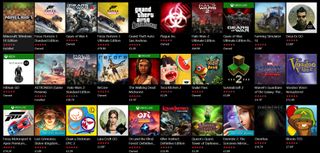
Additionally, some (a lot of) "games" are in fact shovelware designed to siphon money from bored commuters, rather than games. These are often known as mobile games, yet Microsoft's store doesn't make the differentiation until you enter the store listing. This results in some awful user experience that has core PC gamers fleeing the store in favor of more tailored experiences, like Steam, or GOG.
Mobile games simply have a different audience
Of course, there are exceptions, such as Fallout Shelter, Tiny Troopers, or Minecraft, but the vast, vast majority of the games that make up the Windows 10 Store are throwaway touch-based games left over from the Windows 8 era, either crammed with ads, pay-to-win microtransactions or are simply just abandonware. What business does Resident Evil 7 or Astroneer have sitting next to games like Candy Crush Saga? None. And Microsoft isn't helping either market by putting them all in the same pot.
Get the Windows Central Newsletter
All the latest news, reviews, and guides for Windows and Xbox diehards.


Mobile games rose to the fore in an age of perpetual connectivity, where human beings simply can no longer tolerate even fleeting moments of boredom. Games like Candy Crush are designed to require the least amount of involvement possible since they know mobile gaming is performed in a transitory way, during dull stints on public transport, or while slacking off at work. At any moment, you'll have to put the game away, and mobile games are designed around this pick-up, put-down mentality.
Core games are designed for a different purpose - fun. And thus, serve an entirely different market to the likes of Angry Birds, particularly on PC.
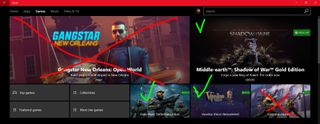
Microsoft might have data that suggests otherwise regarding engagement, but this is about appearances and usability. When gamers dive into the Windows 10 Store, core PC gamers, looking for games they're likely not looking for a quick jaunt through MicrotransactionVille 6. Until Microsoft realizes (or accepts) this, the Windows 10 Store is never going to be seen as a credible solution alongside services like Steam, GoG, or even the oft-derided Origin.
The Windows 10 Store has a bad reputation, and it's getting worse
Another hard truth for Microsoft is, the Windows 10 Store isn't good, and people are aware.
The issue here is one of curation, though. There are some great apps in the Windows 10 Store, such as Instagram, Slack, Polarr, Readit, MyTube, the list goes on. They're just hidden in a deluge of awful apps left over from the Windows 8 days. Clearly, Microsoft is only keeping them around to pad the numbers.

Finding good apps can be a chore, and to some degree, it's understandable that Microsoft would want quality games like Halo Wars 2 to sit front and center in among the junk to elevate the store's image. It's also understandable in the sense that, if Microsoft wants to court developers into using UWP, then they need to make good on the promise that there are hundreds of millions of Windows 10 users active in the store. Even if they're looking for Facebook Messenger, perhaps they'll see the latest Telltale game with Xbox Live integration advertised and make an impulse purchase. The more traffic into the store can only be a good thing, right?
I'd argue that if a PC gamer's first experience with the Windows 10 Store is a bad one, they're never going to come back.
I'd argue that if a PC gamer's first experience with the Windows 10 Store is a bad one, they're never going to come back. The fact that Halo Wars DE and, likely, Halo Wars 2 are coming to Steam, suggests to me that the Windows 10 Store is already far below Microsoft's expectations for engagement on the gaming front, and the situation probably won't be improving anytime soon.
As it stands, UWP games delivered by the Windows 10 Store represents a great feature for console gamers who enjoy Xbox Play Anywhere. However, I'm not sure whether it's worthwhile for PC-exclusive gamers to wade through the swamp in order to find the few decent games on there, particularly when they're already deeply invested in Steam.
The Windows 10 Store's design is still, really, really bad
After two years of Windows 10 Store updates, it's still a terrible app. It's ugly, uninformative, and worst of all, inconsistent. Not the best first impression if you're a Steam user. Or well, the user of any app store that isn't the Windows Store.
Some games have Xbox Live banners on them to inform you that they have achievements, while some, don't. You can't filter by PC and mobile "casual" games, and the games tab often lists titles that handle poorly without a touch-screen, on PCs without a touch screen. It's just tragic and feels like the entire store is another one of Microsoft's big afterthoughts.
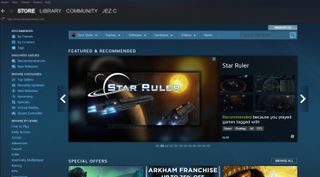
You can sense the lack of quality a mile off. Compare the Windows 10 Storefront to the rich, vast wealth of dynamic information, curation options, and filters you receive on Steam. The two aren't even vaguely comparable. It's like summer interns designed the Windows 10 Store, while Steam plows ahead.
I've been defending the Windows 10 Store for years at this point. I was willing to accept its basic levels of functionality during the first iteration, and the second, and maybe even the third, but we're getting to the point now where it actually needs to be more than just a side project. We still can't gift games or apps, the search functionality is too keen to offer irrelevant results, and the filters and collections are buried below the fold. You can get a list of all the best weather apps, and all Xbox Live-enabled PC games, but average users will have given up long before getting there - and this is something I saw time and time again from working in the IT industry.
Microsoft: you can't just lump all games together
When it comes to issues of curation, there's no simple solution, particularly where UWP is concerned. While some games clearly live in a core gamer's library, like Gears of War 4 or Forza Horizon 3, there are games which tend to bridge a gap between casual/mobile/pay-to-win and real, actual games, such as Plague Inc. and Fallout Shelter. Where do you draw the line if the plan is to create separate stores?
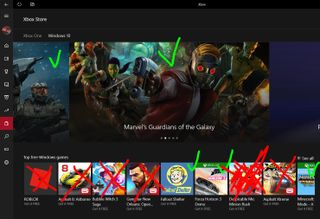
The logical conclusion would be to just slap any Xbox-certified games in the Xbox app, which indeed, has its own store. There's a tab for Windows 10, but it includes crapware and shallow marketing ploys like Minion Rush. The store in the Xbox app should be solely for actual games, which live up to a minimum level of, you know, being a real game.
It's time to admit that some games are different to others, for the sake of your users, present, and future.
Of course, this would present a problem for Microsoft. The company needs games like Candy Crush in its store if it is the plan to keep pushing Windows-based touch devices to consumers, and limiting certain game's visibility would undoubtedly tick off some of the bigger mobile publishers. I'd argue it's worth doing in the long run, though, particularly if UWP is ever going to be a credible method for delivering big PC games in the future - which represents one of the few remaining drivers of PC growth. There are plenty of motivating factors as to why Microsoft would want to keep the stores merged, but I think the positives of splitting them up by far outweigh the negatives.
Let the Xbox app be the place where real games live, that have proper controls designed for mouse, keyboard, and controller. Give touch games their own tab in the Windows 10 Store, so that at least if people don't want to see them, they don't have to. And what's more, it would help mobile games gain visibility they desperately need. It's time to admit that some games are different to others, for the sake of your users, present, and future.

Jez Corden is the Executive Editor at Windows Central, focusing primarily on all things Xbox and gaming. Jez is known for breaking exclusive news and analysis as relates to the Microsoft ecosystem while being powered by tea. Follow on Twitter (X) and Threads, and listen to his XB2 Podcast, all about, you guessed it, Xbox!